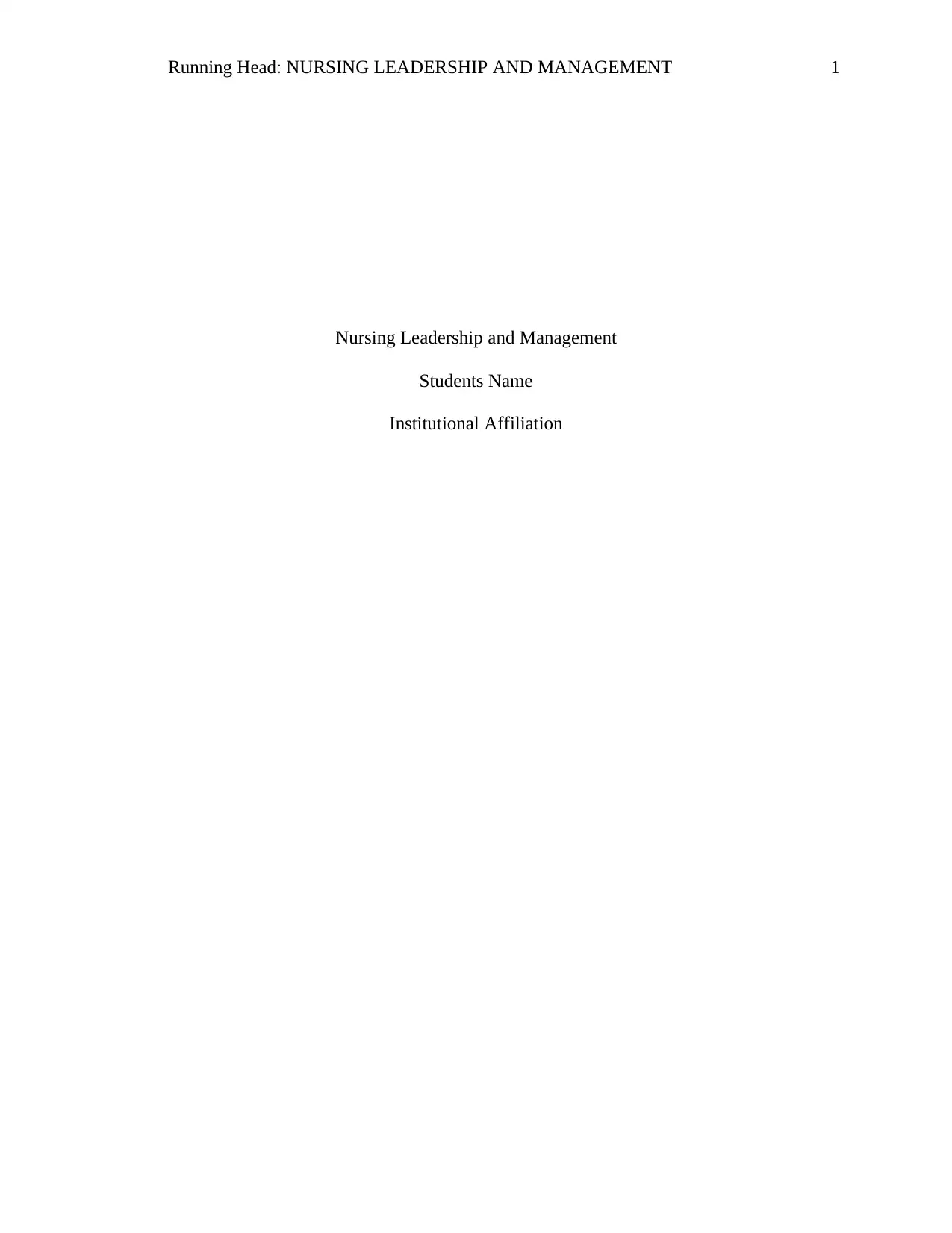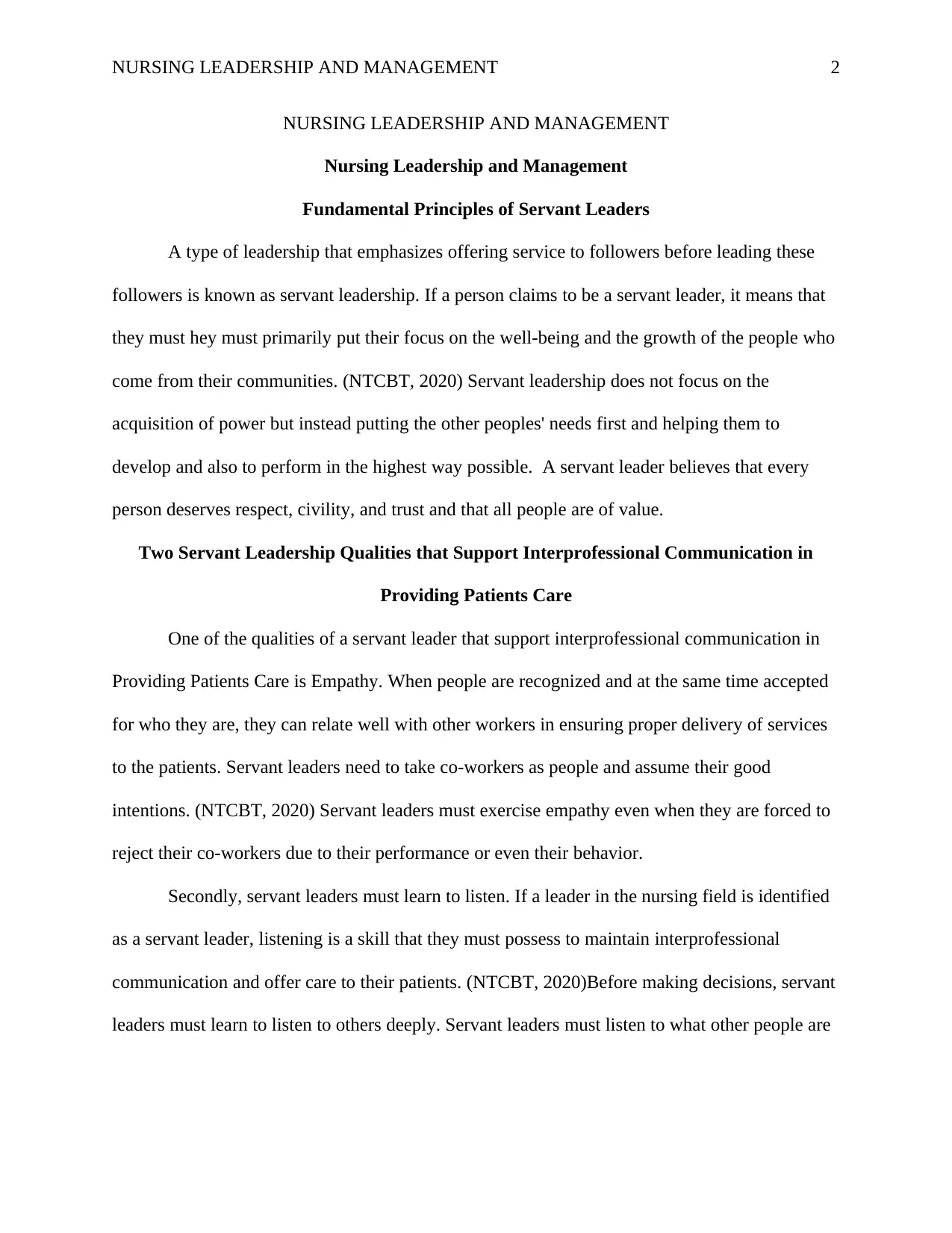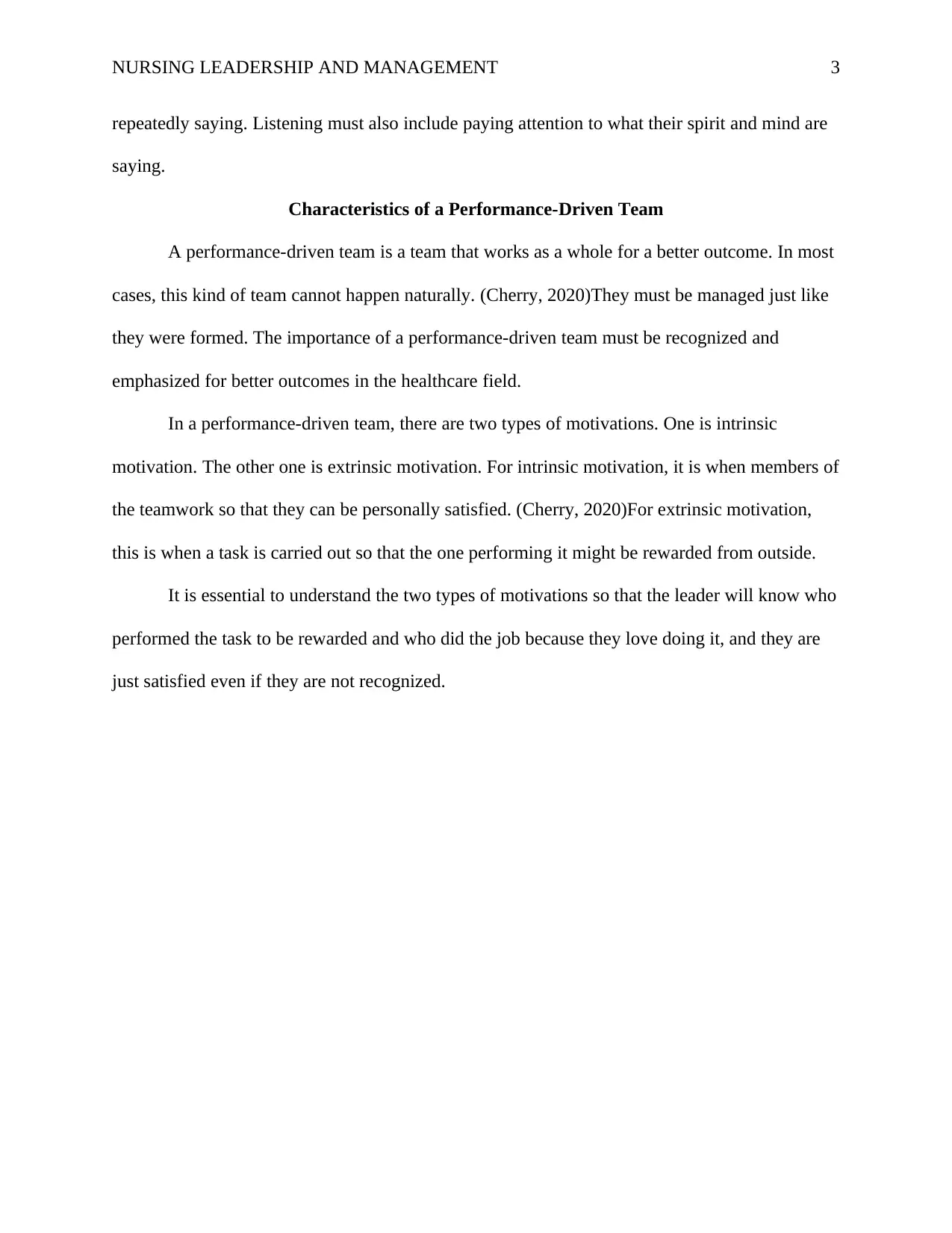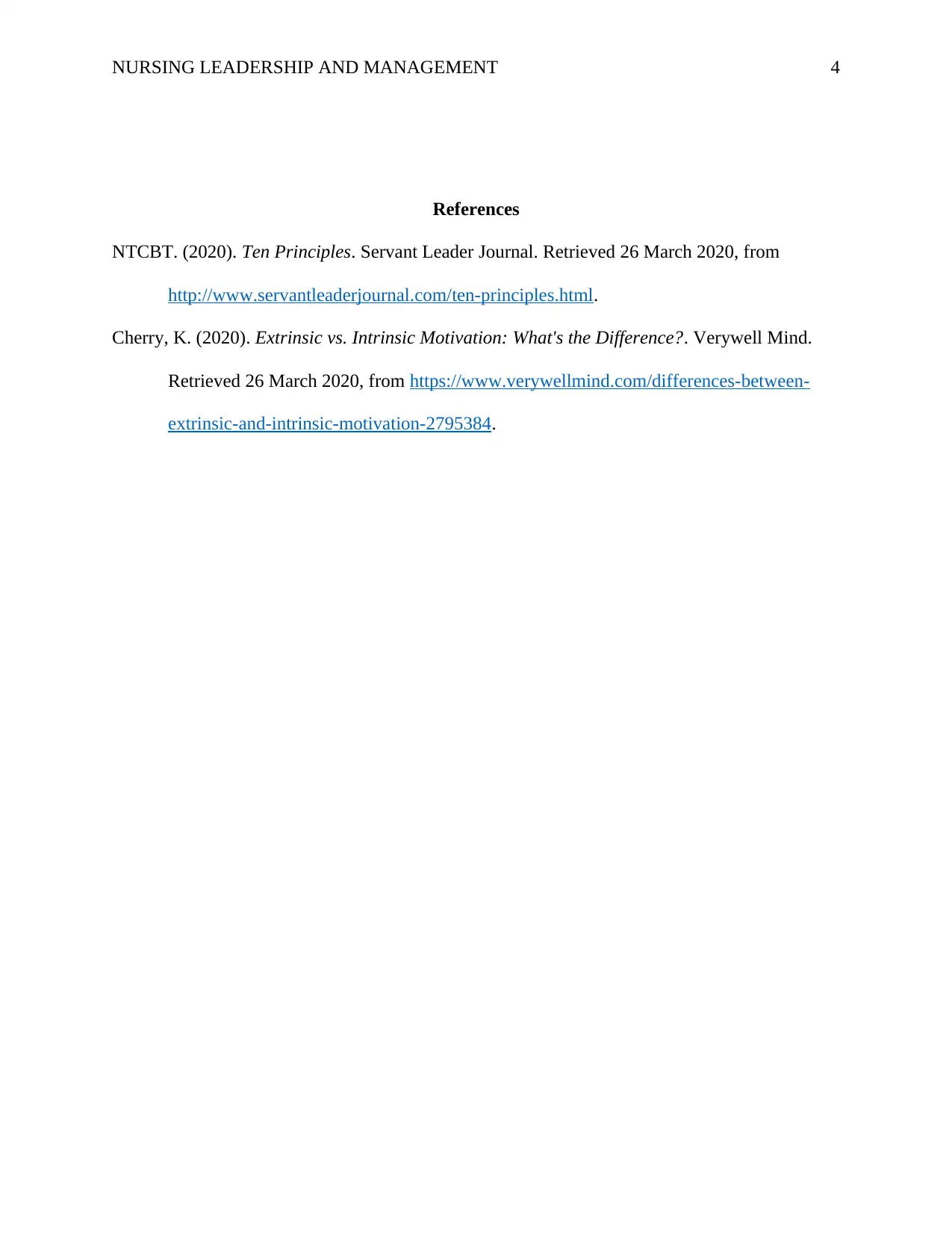Nursing Leadership and Management: Servant Leadership Report Analysis
VerifiedAdded on 2022/09/01
|4
|585
|13
Report
AI Summary
This report analyzes the principles of servant leadership within the context of nursing and healthcare management. It emphasizes the importance of servant leadership in healthcare settings, focusing on how qualities like empathy and active listening can facilitate effective interprofessional communication and improve patient care. The report also discusses the characteristics of a performance-driven team, including the role of intrinsic and extrinsic motivation in achieving optimal outcomes. The report uses real-world examples to describe how servant leadership can be applied in nursing, highlighting the benefits of this leadership style in fostering collaborative and efficient healthcare environments. The report concludes by emphasizing the significance of understanding and implementing servant leadership principles to improve team dynamics, patient outcomes, and overall healthcare quality.
1 out of 4











![[object Object]](/_next/static/media/star-bottom.7253800d.svg)